Alaa Alameer Ahmad
Advancing Agentic Systems: Dynamic Task Decomposition, Tool Integration and Evaluation using Novel Metrics and Dataset
Oct 29, 2024



Abstract:Advancements in Large Language Models (LLMs) are revolutionizing the development of autonomous agentic systems by enabling dynamic, context-aware task decomposition and automated tool selection. These sophisticated systems possess significant automation potential across various industries, managing complex tasks, interacting with external systems to enhance knowledge, and executing actions independently. This paper presents three primary contributions to advance this field: - Advanced Agentic Framework: A system that handles multi-hop queries, generates and executes task graphs, selects appropriate tools, and adapts to real-time changes. - Novel Evaluation Metrics: Introduction of Node F1 Score, Structural Similarity Index (SSI), and Tool F1 Score to comprehensively assess agentic systems. - Specialized Dataset: Development of an AsyncHow-based dataset for analyzing agent behavior across different task complexities. Our findings reveal that asynchronous and dynamic task graph decomposition significantly enhances system responsiveness and scalability, particularly for complex, multi-step tasks. Detailed analysis shows that structural and node-level metrics are crucial for sequential tasks, while tool-related metrics are more important for parallel tasks. Specifically, the Structural Similarity Index (SSI) is the most significant predictor of performance in sequential tasks, and the Tool F1 Score is essential for parallel tasks. These insights highlight the need for balanced evaluation methods that capture both structural and operational dimensions of agentic systems. Additionally, our evaluation framework, validated through empirical analysis and statistical testing, provides valuable insights for improving the adaptability and reliability of agentic systems in dynamic environments.
Robust Communication and Computation using Deep Learning via Joint Uncertainty Injection
Jun 05, 2024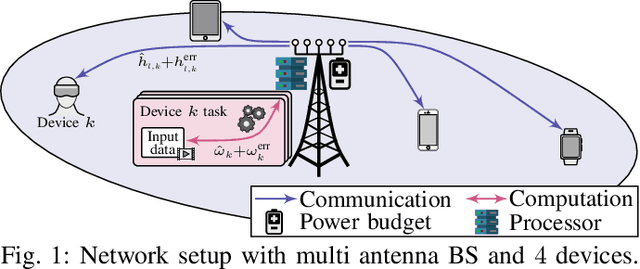
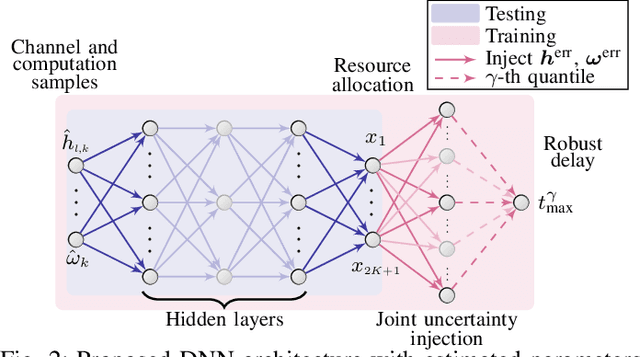
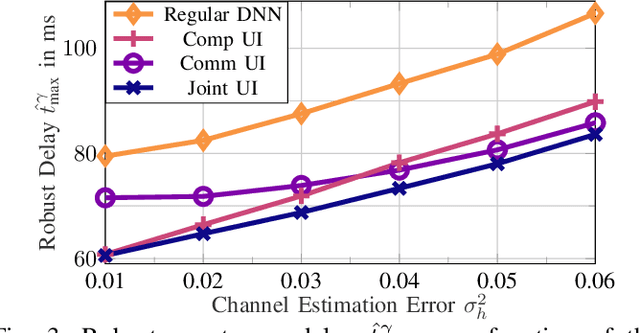
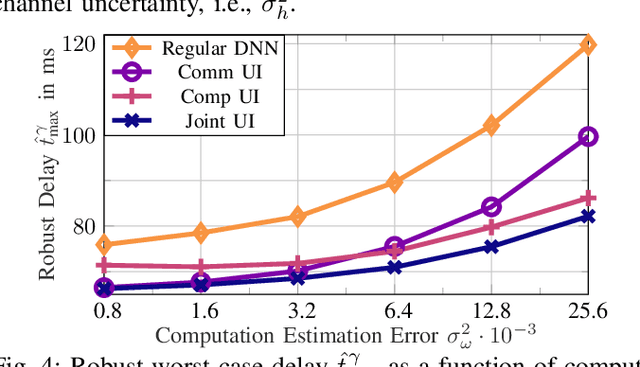
Abstract:The convergence of communication and computation, along with the integration of machine learning and artificial intelligence, stand as key empowering pillars for the sixth-generation of communication systems (6G). This paper considers a network of one base station serving a number of devices simultaneously using spatial multiplexing. The paper then presents an innovative deep learning-based approach to simultaneously manage the transmit and computing powers, alongside computation allocation, amidst uncertainties in both channel and computing states information. More specifically, the paper aims at proposing a robust solution that minimizes the worst-case delay across the served devices subject to computation and power constraints. The paper uses a deep neural network (DNN)-based solution that maps estimated channels and computation requirements to optimized resource allocations. During training, uncertainty samples are injected after the DNN output to jointly account for both communication and computation estimation errors. The DNN is then trained via backpropagation using the robust utility, thus implicitly learning the uncertainty distributions. Our results validate the enhanced robust delay performance of the joint uncertainty injection versus the classical DNN approach, especially in high channel and computational uncertainty regimes.
Synergistic Benefits in IRS- and RS-enabled C-RAN with Energy-Efficient Clustering
May 12, 2021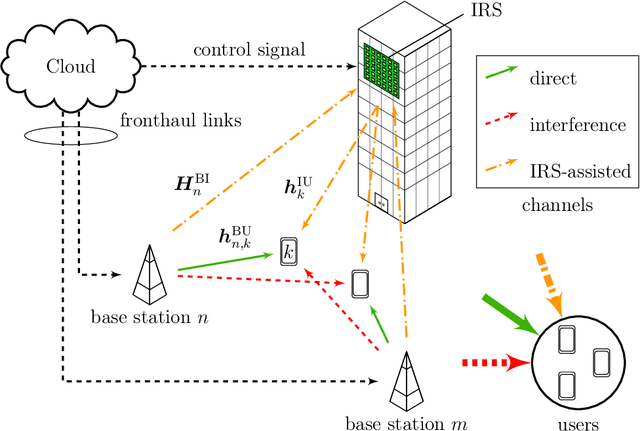
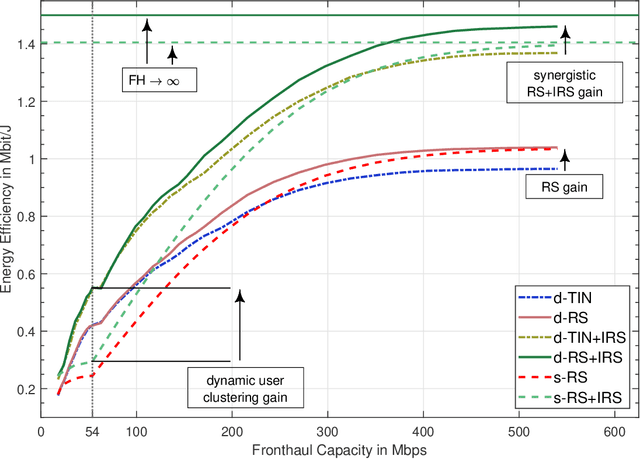
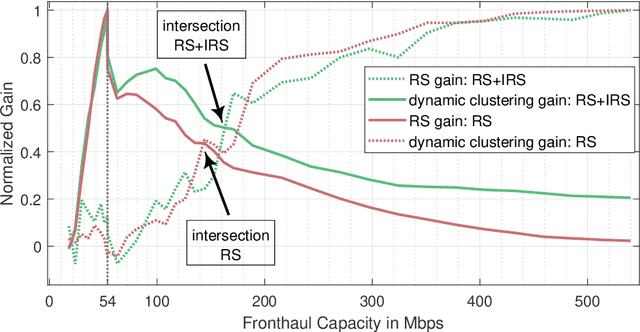
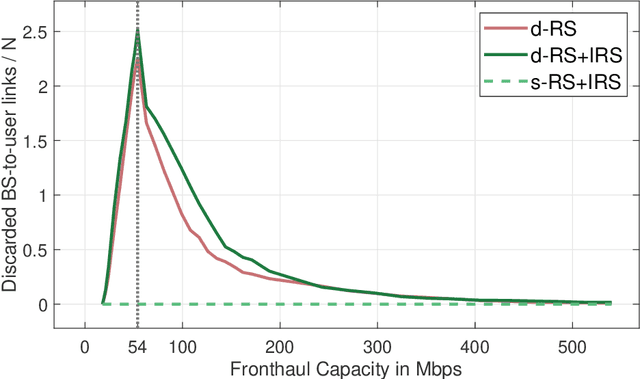
Abstract:The potential of intelligent reflecting surfaces (IRSs) is investigated as a promising technique for enhancing the energy efficiency of wireless networks. Specifically, the IRS enables passive beamsteering by employing many low-cost individually controllable reflect elements. The resulting change of the channel state, however, increases both, signal quality and interference at the users. To counteract this negative side effect, we employ rate splitting (RS), which inherently is able to mitigate the impact of interference. We facilitate practical implementation by considering a Cloud Radio Access Network (C-RAN) at the cost of finite fronthaul-link capacities, which necessitate the allocation of sensible user-centric clusters to ensure energy-efficient transmissions. Dynamic methods for RS and the user clustering are proposed to account for the interdependencies of the individual techniques. Numerical results show that the dynamic RS method establishes synergistic benefits between RS and the IRS. Additionally, the dynamic user clustering and the IRS cooperate synergistically, with a gain of up to 88% when compared to the static scheme. Interestingly, with an increasing fronthaul capacity, the gain of the dynamic user clustering decreases, while the gain of the dynamic RS method increases. Around the resulting intersection, both methods affect the system concurrently, improving the energy efficiency drastically.
Reinforcement Learning based Beamforming for Massive MIMO Radar Multi-target Detection
May 10, 2020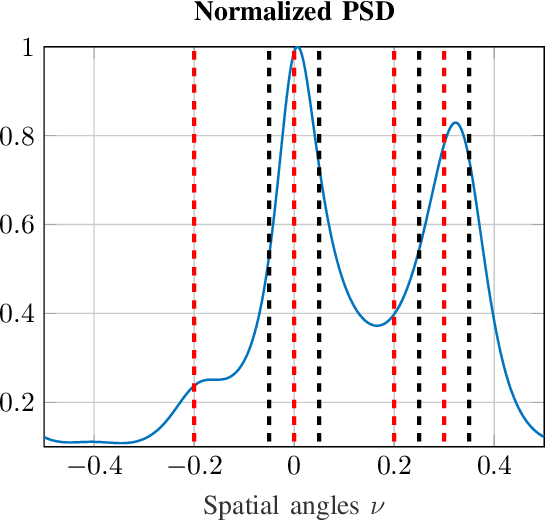
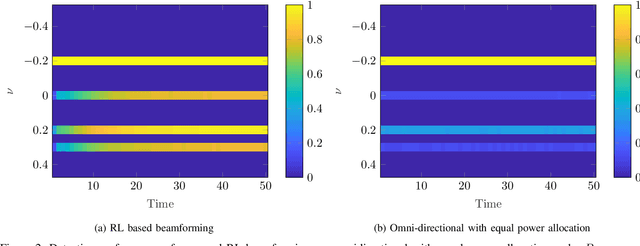
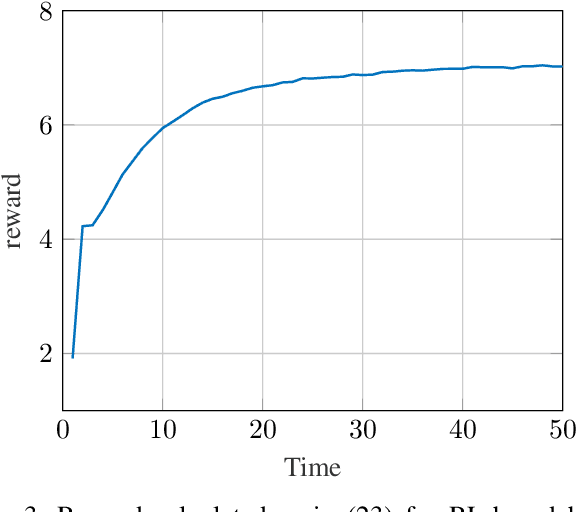
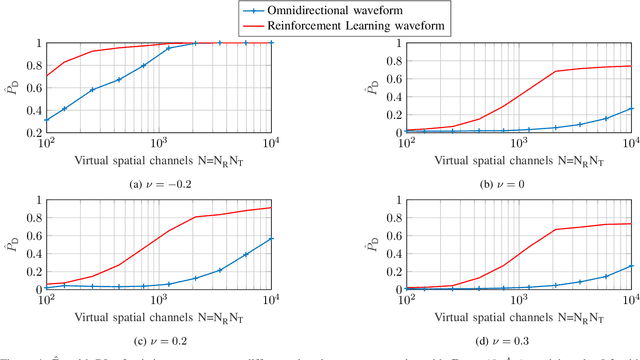
Abstract:This paper considers the problem of multi-target detection for massive multiple input multiple output (MMIMO) cognitive radar (CR). The concept of CR is based on the perception-action cycle that senses and intelligently adapts to the dynamic environment in order to optimally satisfy a specific mission. However, this usually requires a priori knowledge of the environmental model, which is not available in most cases. We propose a reinforcement learning (RL) based algorithm for cognitive beamforming in the presence of unknown disturbance statistics. The radar acts as an agent which continuously senses the unknown environment (i.e., targets and disturbance). Consequently, it optimizes the beamformers through tailoring the beampattern based on the acquired information. Furthermore, we propose a solution to the beamforming optimization problem with less complexity than the existing methods. Numerical simulations are performed to assess the performance of the proposed RL-based algorithm in both stationary and dynamic environments. The RL based beamforming is compared to the conventional omnidirectional approach with equal power allocation. As highlighted by the proposed numerical results, our RL-based beamformer greatly outperforms the omnidirectional one in terms of target detection performance. The performance improvement is even more remarkable under environmentally harsh conditions such as low SNR, heavy-tailed disturbance and rapidly changing scenarios.
 Add to Chrome
Add to Chrome Add to Firefox
Add to Firefox Add to Edge
Add to Edge